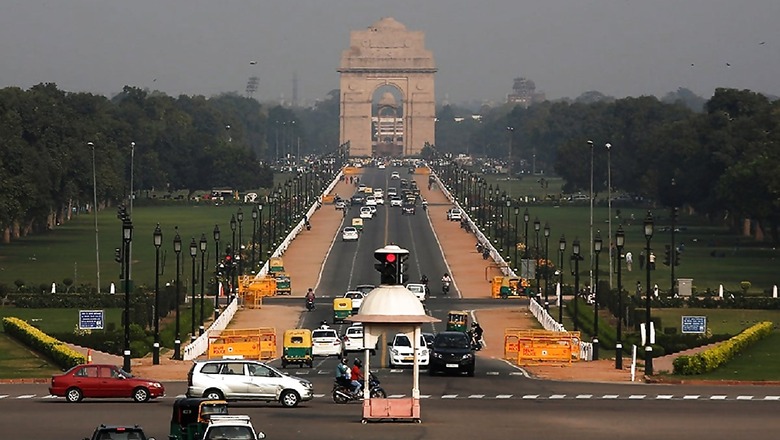
views
New Delhi: Delhi’s air quality was recorded in the poor category Friday but a government agency said it could improve by Sunday because of a likely change in wind direction. The maximum wind speed in Delhi was 15 kmph and the direction was northwesterly on Friday; the minimum temperature settled at 19.2 degrees Celsius. Low temperatures and stagnant winds help in accumulation of pollutants near the ground, affecting air quality.
The Ministry of Earth Sciences’ air quality monitor, SAFAR, said the air quality index (AQI) is likely to improve to the moderate category by Sunday. A low-pressure area over the Bay of Bengal is expected to intensify and influence circulations in north and central India. A shift in surface wind direction in Delhi — from northwesterly to southeasterly, is likely by Monday, it said.
This could influence air quality positively in the coming week, SAFAR said. Delhi’s 24-hour average AQI stood at 202. It was 208 on Thursday.
An AQI between 101 and 200 is is considered ‘moderate’, 201 and 300 ‘poor’, 301 and 400 ‘very poor’, and 401 and 500 ‘severe’. The total farm fire count in Punjab, Haryana and other neighbouring regions was 250 on Thursday.
High levels of air pollution is a year-round problem in Delhi, which can be attributed to unfavourable meteorological conditions, farm fires in neighbouring regions and local sources of pollution. According to an analysis by the Council on Energy, Environment and Water, a Delhi-based think tank, transportation contributes the most — 18 to 39 percent — to Delhi’s air pollution.
Road dust is the second largest source of air pollution in the city (18 to 38 percent), followed by industries (2 to 29 percent), thermal power plants (3 to 11 percent) and construction (8 percent). Starting October 15, stricter measures to fight air pollution will also come into force in Delhi and its neighbourhood as part of the Graded Response Action Plan, which was first implemented in Delhi-NCR in 2017.
These measures include increasing bus and metro services, hiking parking fees and stopping use of diesel generator sets when the air quality turns poor. When the situation turns “severe”, GRAP recommends closure of brick kilns, stone crushers and hot mix plants, sprinkling of water, frequent mechanised cleaning of roads and maximising power generation from natural gas.
The measures to be followed in the “emergency” situation include stopping entry of trucks in Delhi, ban on construction activities and introduction of the odd-even car rationing scheme.
Disclaimer: This post has been auto-published from an agency feed without any modifications to the text and has not been reviewed by an editor
Read all the Latest News and Breaking News here


















Comments
0 comment